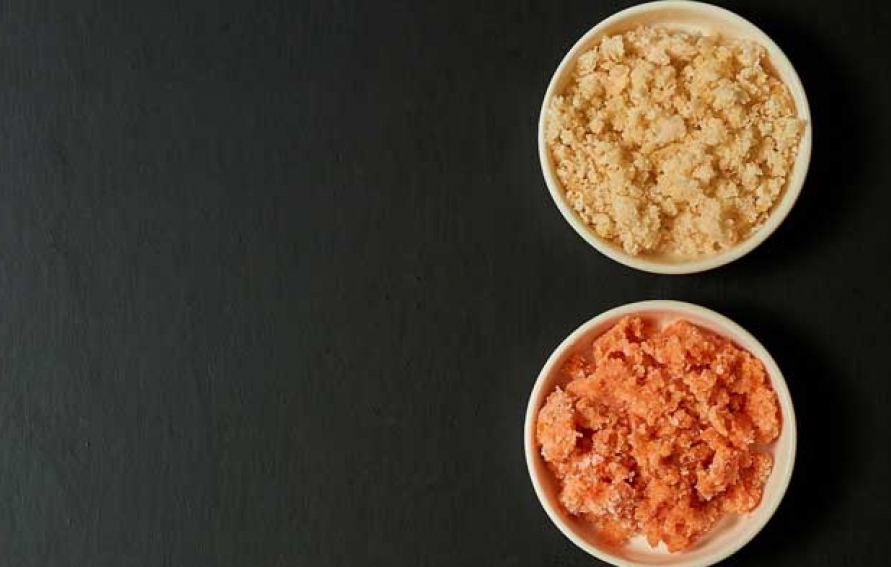Ingredients
- 1 c. firmly packed vegetable scraps
- 1½ c. kosher salt
Instructions
Heat your oven to its lowest setting.
In a food processor or blender, grind the vegetable scraps together with half of the salt. Blend until the vegetable is pureed (though a few small chunky pieces are OK). Remove the puree from the processor bowl and mix the remaining salt in evenly.
Spread the salt mixture in an even layer across a rimmed baking sheet. Place in oven and let it dehydrate, stirring and scraping up the salt occasionally. Depending on how wet your mix is, this can take from 1–5 hours. If the salt clumps up too much, you can use a mortar and pestle, or your hands, to “declump” it.
Store in tightly sealed jars. The quantity you make can be adjusted up or down depending on what you have on hand: just add 1½ times more salt (by volume) than vegetable to the mix.
About this recipe
One of the greatest things about summer is cooking with gorgeous fresh vegetables. But my heart always breaks a bit when I see the pile of scraps littering my workspace after a marathon cooking session. That detritus—the scraps, peels and leafy tops—always promises even more pleasure. For years I’ve wracked my brain for ways to use it all.
Stocks, soups, pestos … all these options have been fully explored in my kitchen, but I recently discovered yet another way to use those scraps. It has changed the way I cook and season my food. (It’s also given me a bottomless arsenal of hostess and holiday gifts.) I make seasoned salts.
The procedure is simple: measure the vegetables, grind them up in a food processor or blender, and then add an equal weight of salt. I spread the shaggy, moist mixture across a sheet pan in a thin layer and let it dry, either in my oven or on the counter (the oven is faster—your salt will be ready in a few hours; the counter method will take a day or two, depending on the humidity in your kitchen).
As with all vegetable scraps, some things are best sent right to compost: rotten or slimy vegetables, and peelings that are fibrous and not flavorful, should go right to the bin. But the majority of scraps can be repurposed: carrot and beet trimmings, kale and chard stems, little nibs of onion, and scraps of tomato all work well. I usually keep my vegetables separate and produce single-flavor salts, but there’s no reason you can’t mix your scraps together to make a “veggie salt.” I occasionally add citrus zest or fruit peels to mine.
These salts are best if kept in tightly sealed jars in a dark spot, or a kitchen cabinet is just fine. They do not need refrigeration. I try to use them within six to nine months, though storage time will vary by ingredient. The flavor may diminish over time, but the salt never goes “bad.” Use them for seasoning wherever you would use salt.
Favorite Seasoned Salts
Experiment and discover your own favorite combinations and flavors.
Apple peels, sage, onion: An all-purpose seasoning that works wonders on pork.
Beets: This salt is stunning on ricotta or hummus.
Carrots: Use your washed peels or any scraps. This salt is very pretty sprinkled over deviled eggs.
Celery and celery leaves: Use this flavor powerhouse to add a depth of flavor to soups.
Lemon peels (remove the white pith first), rosemary, thyme and parsley stems: Great on chicken or fish. Add freshly ground pepper to make your own version of lemon pepper seasoning.
Onion and/or garlic: Garlic scape stems are great here, and it’s a wonderful to preserve that very seasonal crop for use later in the year.
Tomato: This will be a very wet purée and will take at least 5 hours to dry completely.





